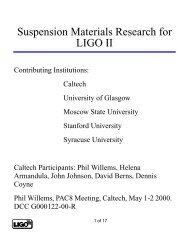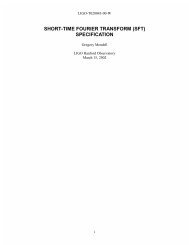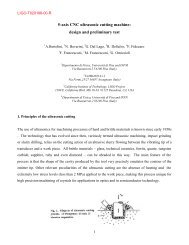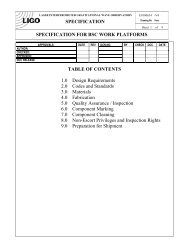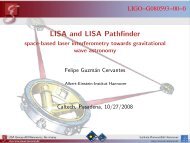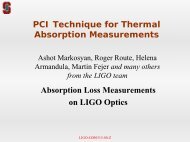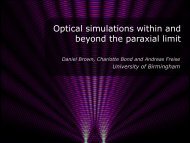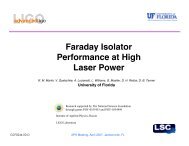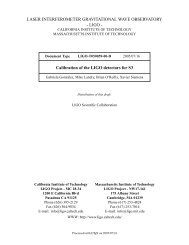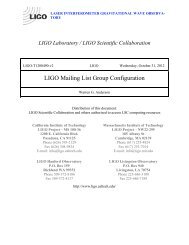Pulsar Timing Arrays Current and Future Instrumentation - DCC
Pulsar Timing Arrays Current and Future Instrumentation - DCC
Pulsar Timing Arrays Current and Future Instrumentation - DCC
You also want an ePaper? Increase the reach of your titles
YUMPU automatically turns print PDFs into web optimized ePapers that Google loves.
<strong>Pulsar</strong> <strong>Timing</strong> <strong>Arrays</strong><strong>Current</strong> <strong>Instrumentation</strong>Typical Parameters• A eff ~ 100 m• ∆ν ~ 100 MHz• T sys ~ 30 K• ∆t ~ 15 min.<strong>Current</strong> Publications• Yardley et al. 2011, “On detection of thestochastic gravitational-wave background usingthe Parkes pulsar timing array,” Mon. Not. R.Astron. Soc., 414, 1777• van Haasteren et al. 2011, “Placing limits on thestochastic gravitational-wave background usingEuropean <strong>Pulsar</strong> <strong>Timing</strong> Array data,” Mon. Not.R. Astron. Soc., 414, 3117• Demorest et al. 2012, “Limits on the StochasticGravitational Wave Background from the NorthAmerican Nanohertz Observatory forGravitational Waves,” ApJ, in press• Hobbs et al. 2010, “The International <strong>Pulsar</strong><strong>Timing</strong> Array project: using pulsars as agravitational wave detector,” Class. Quant.Grav., 27, 084013



